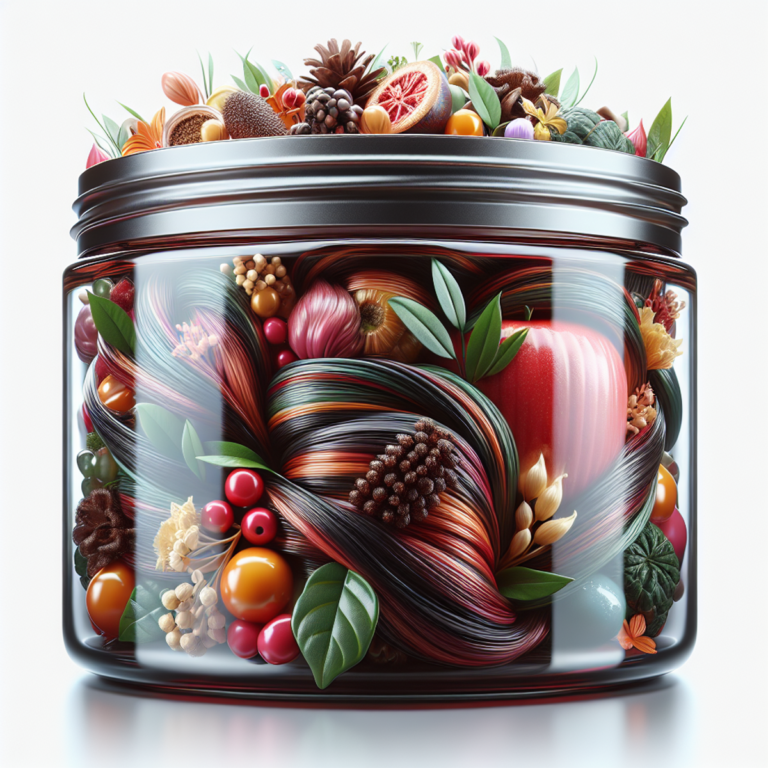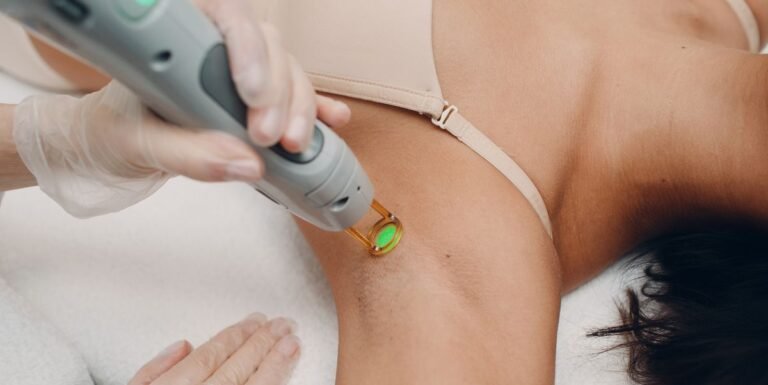How to Tell If Your Nail Salon Is Safe

Introduction
Nail salon safety is incredibly important. It includes a wide range of practices and procedures that are meant to keep the salon clean and hygienic, which in turn helps protect the health of customers. Nail salon safety involves following strict sanitation measures and making sure that hygiene is always a top priority.
Having a safe and clean nail salon isn’t just about making sure that customers have a good experience – it’s also about looking out for their well-being. The link between nail salon hygiene and customer health is crucial. If cleanliness standards aren’t up to par, it can result in the spread of bacteria, fungus, or even serious blood-borne illnesses like hepatitis or HIV.
That’s why it’s absolutely essential to create a safe nail salon environment that prioritizes the health and safety of both customers and staff members.
Signs of a Safe and Clean Nail Salon
When it comes to ensuring the safety and cleanliness of a nail salon, there are several key factors to consider. From visual inspections to hygiene standards, each aspect plays a crucial role in maintaining a safe environment for both customers and staff.
1. Visual Inspection
Observing the overall hygiene practices followed by the salon staff is essential in determining the cleanliness of the establishment. This includes checking for clean and well-maintained workstations and equipment. A visually appealing and tidy salon indicates a commitment to cleanliness, creating a more hygienic environment for clients.
As you walk into the salon, take note of the following visual cues:
- Cleanliness: Look for clean floors, dust-free surfaces, and organized workstations. A clutter-free environment not only enhances the aesthetic appeal of the salon but also reduces the risk of cross-contamination.
- Sanitized Tools: Ensure that nail files, buffers, and other tools are properly sanitized or disposed of after each use. Sterilization plays a critical role in preventing the spread of infections among clients.
- Proper Waste Disposal: Proper management of waste materials, such as used cotton balls and tissues, reflects the salon’s commitment to maintaining a clean and hygienic space.
- Personal Hygiene: Observe the attire and personal hygiene of the staff. Clean uniforms and well-groomed technicians demonstrate professionalism and dedication to maintaining a safe working environment.
By paying attention to these visual indicators, you can gain valuable insights into the overall cleanliness and hygiene practices of the nail salon.
By conducting a thorough visual inspection, you can assess the salon’s commitment to maintaining a clean and hygienic environment. This sets the tone for an enjoyable and safe experience for both customers and staff.
2. Ensuring Sterilization Procedures
Nail salon cleanliness and its impact on health cannot be overstated. The risks of using unsanitized tools in nail salons are significant, as they can lead to bacterial contamination and the spread of infections. It is crucial to verify the implementation of proper sterilization methods in a nail salon to ensure the safety and well-being of clients.
Why Sterilization Matters
Using unsanitized tools in nail salons can pose serious risks:
- Bacterial Contamination: When tools are not properly cleaned and sanitized, they can harbor bacteria from previous use. This increases the chances of bacterial infections.
- Spread of Infections: Nail salons are communal spaces where multiple people receive treatments throughout the day. If one person has an infection, using contaminated tools can spread it to others.
How to Ensure Proper Sterilization
To prevent these risks, it’s important for nail salons to:
- Use Approved Sterilization Methods: Autoclave or dry heat sterilizers are effective in killing harmful pathogens on tools.
- Verify Sterilization Practices: Ask the salon about their sterilization procedures and how often they perform them. They should have a consistent schedule for cleaning and sterilizing their tools.
By following these steps, nail salons can prioritize the safety of their clients and maintain a clean environment.
The Impact on Health and Safety
The importance of checking for cleanliness at a nail salon cannot be emphasized enough, as it directly impacts the health and safety of both clients and technicians. By prioritizing hygiene in nail salons and ensuring that sterilization procedures are diligently followed, the risk of potential health hazards associated with unsanitary practices can be significantly reduced.
In summary, maintaining strict sterilization procedures is fundamental to upholding the highest standards of hygiene in nail salons. Clients should feel confident that the tools and equipment used during their treatments have been thoroughly sterilized, minimizing any risks associated with unsanitary practices.
3. Safe Foot Bath Protocols
When you visit a nail salon, it’s important to know the potential dangers of foot baths and how to stay safe. Here are some tips to help you protect yourself:
1. Understand the Risks
Foot baths in nail salons can be a breeding ground for bacteria if they’re not cleaned and sanitized properly. This can lead to infections and other health problems. It’s essential to be aware of these risks so you can make informed decisions about your salon visits.
2. Look for Hygiene Practices
Before booking an appointment, take the time to research the salon’s hygiene practices. Look for places that prioritize cleanliness and follow these preventive measures:
- Pipeless Foot Baths: These types of foot baths are less likely to have bacterial growth because they don’t have internal pipes where water can sit and get contaminated.
- Disposable Liners: Salons that use disposable liners provide an extra layer of protection between your feet and the basin, reducing the risk of cross-contamination.
3. Trust Your Instincts
Pay attention to the overall cleanliness of the salon. Trust your instincts and if something doesn’t feel right, don’t hesitate to speak up or find another salon that prioritizes your safety.
By keeping these guidelines in mind, you can be proactive in safeguarding yourself from potential health hazards associated with foot baths at nail salons. Remember, your well-being should always come first when choosing a salon for your nail care needs.
4. Personal Hygiene Standards for Technicians
Maintaining a safe environment for clients is crucial in nail salons. One way to ensure this is by prioritizing technician hygiene. Here are some key points to consider when evaluating technician hygiene:
- Cleanliness: Technicians should always keep themselves clean, wear tidy clothes, and maintain proper grooming.
- Hygiene Practices: Technicians must follow strict hygiene practices, such as washing their hands frequently and sanitizing their tools between clients.
- Avoiding Open Sores or Nail Fungus: Technicians should be careful not to work on clients who have visible open sores, cuts, or nail fungus to prevent the risk of spreading infections.
The overall cleanliness and hygiene practices of technicians play a significant role in ensuring a safe and healthy environment for clients at nail salons. By upholding strict personal hygiene standards, technicians contribute to the prevention of potential health hazards associated with unsanitary nail salon practices.
Red Flags to Watch Out For
When you visit a nail salon, it’s important to look out for certain signs that could indicate potential health risks and an unsafe environment. By being aware of these red flags, you can make informed decisions about the safety of the salon before getting any treatments.
1. Poor Ventilation and Air Quality
One of the most crucial factors to consider when evaluating a nail salon’s safety standards is its ventilation and air quality. Inadequate ventilation can create a dangerous atmosphere, putting both customers and salon staff at risk. When there isn’t enough fresh air circulating, harmful chemical fumes from nail products can build up, making the environment unhealthy. Prolonged exposure to these fumes can lead to breathing problems and other health issues.
A telltale sign of poor ventilation is the presence of strong chemical smells that linger in the air. This indicates that the salon may not have efficient airflow systems in place to eliminate these odors and reduce the concentration of harmful particles. As a customer, it’s important to feel comfortable in the salon without being overwhelmed by these strong odors.
To ensure your well-being, it is crucial for nail salons to maintain high standards of air quality and ventilation. This involves having effective systems in place that continuously bring in fresh air, reducing the risk of chemical exposure. By paying attention to whether there’s fresh air and minimal chemical smells, you can gauge if the salon prioritizes everyone’s well-being.
Remember that good ventilation is paramount for your health when you’re at a nail salon. If you notice any signs of poor air quality or inadequate ventilation, it’s essential to address your concerns with the salon staff or consider finding an alternative establishment that adheres to safe nail salon practices. Your well-being should always come first when choosing a nail salon for your beauty treatments.
2. Lack of Safety Measures
When you walk into a nail salon, the presence of strong chemical smells can be a red flag for an unsafe environment. These long-lasting chemical odors not only create discomfort but also pose potential health risks to both customers and salon staff. Identifying warning signs of an unsafe nail salon is crucial in ensuring your well-being during visits.
Here are the key talking points for assessing the presence of safety measures in a nail salon:
- Importance of Safety Measures: Emphasize the importance of having proper safety measures in place to protect against potential hazards.
- Fire Extinguishers and First Aid Kits: Highlight the necessity of fire extinguishers and first aid kits as basic safety equipment in case of emergencies.
Remember, the overall appearance and ambiance of the salon, including the presence of safety signs, can provide valuable insights into the establishment’s commitment to maintaining a safe environment for both clients and employees.
Conclusion
Ensuring the safety and cleanliness of a nail salon is essential for maintaining a healthy environment for both customers and technicians. By paying attention to certain signs and red flags, you can make informed decisions about where to get your nails done.
Remember these key points:
- Conduct a Visual Inspection: Take note of the overall cleanliness and hygiene practices followed by the salon staff. Look for clean and well-maintained workstations and equipment.
- Ensure Sterilization Procedures: Verify that the salon implements proper sterilization methods, such as autoclave or dry heat, to eliminate the risk of using unsanitized tools.
- Follow Safe Foot Bath Protocols: Be cautious about foot baths, as they can be a breeding ground for bacteria. Opt for salons that use pipeless systems or disposable liners to prevent bacterial contamination.
- Consider Technician Hygiene Standards: Technicians should adhere to personal hygiene standards, including refraining from working on clients with open sores or nail fungus.
In addition, watch out for red flags like poor ventilation and air quality in the salon, as well as a lack of safety measures such as fire extinguishers and first aid kits.
By prioritizing your health and taking these precautions, you can enjoy a safe and pleasant experience at the nail salon. Remember, your well-being should always come first.
Stay safe and enjoy your next nail salon visit!










